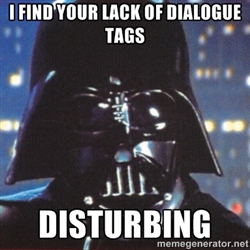Last week one of the juniors at work said, “What’s SEO?”
Bless his little heart. He’s in his first year of journalism and they haven’t covered search engine optimisation yet. If you don’t know what it means either, it basically means using the right words so that people can find the content they want easily, in the place they expect it to be.
Here’s my case study on why using the right words is important for businesses big and small.
Last week for work I was researching which service station chains had environmental repair programs, community support programs or sponsored worthy charitable causes. (These articles coming soon to an interwebs near you.)
Most of the chains I researched made that information really easy to find: “Environment”, “Community partnerships”, “Sponsorships”, “Giving Back”, or even “Why you can trust Our Company not to screw up your world”.
But some of them didn’t list the information at all, or they buried it in their corporate reports under “Governance structures” or “Company policies”. Um, hello?
Imagine if I was a prospective customer instead of a journalist – they just lost themselves a sale because I couldn’t find the information I wanted.
So today’s big lesson is for everyone in a company, whether big or small. From web designers to corporate writers to CEOs:
Write for the customer.
Nobody else matters.
And even if this non-customer person does matter, you don’t write stuff for them on the public website; you put what they need into a report and give it to them in a professional package.
Otherwise, all you’re doing is causing frustration and driving potential customers away from your company. Like singing opera when your audience came to hear a musical – a similar concept in most ways, but very, very different in terms of user-friendliness.

The opera ‘La Boheme’, being performed at the Teatro Solis in Montevideo in August 2005. Image source: Foto te Casur, Ireland’s Own
What are the “right words” that I mentioned? They change over time, unfortunately, so you need to always be on the ball, checking what other people in your field are up to. Regularly view your competitors’ websites and do a “spot the differences” with your own website.
This won’t be a long post about SEO or copywriting or web design. All of that is pretty boring if it’s not your passion, and you can pay someone else to do it. (I’ve done a stack of copywriting in my career so far because I love it.) I just wanted a chance to vent about companies whose websites aren’t user-friendly.
Phew.
End vent. 🙂
This post was written by TJ Withers-Ryan © 2015. Re-blogging is always highly encouraged as long as you credit me as the author.










